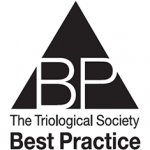A transcanal endoscopic approach was performed with the aim of removing an epitympanic cholesteatoma without the transmastoid approach, and to reconstruct the scutum after obliteration of the epitympanum at the same time.


A transcanal endoscopic approach was performed with the aim of removing an epitympanic cholesteatoma without the transmastoid approach, and to reconstruct the scutum after obliteration of the epitympanum at the same time.

Sterotactic radiosurgery (SRS) for the treatment of VS can be associated with increased balance symptoms, often within the first six months after treatment.

As evidence linking hearing loss to cognitive decline mounts, researchers and clinicians are starting to explore whether automated, self-administered cognitive screening tests should be added to routine workups of patients seen in busy otolaryngology practices.
LW arrays are preferable to PM arrays for minimizing clinically relevant intracochlear trauma in cochlear implantation.
Chemosensory dysfunction is very common in COVID-19 and, although most people regain function within the first 28 days.

Cost-effectiveness varies between adults and children.

There is evidence that steroid use may be beneficial to improve hearing preservation.

Betahistine is widely used in Europe and the rest of the world in the treatment of Ménière’s disease.

Literature review does not support routine use of tomography (CT) prior to planned primary stapedotomy in patients with adult-onset CHL/MHL.

Otolaryngology experts examined important clinical questions in five areas—from antivirals for newborn hearing to tonsillar cancer—during the Triological Society’s “Best Practices” session.